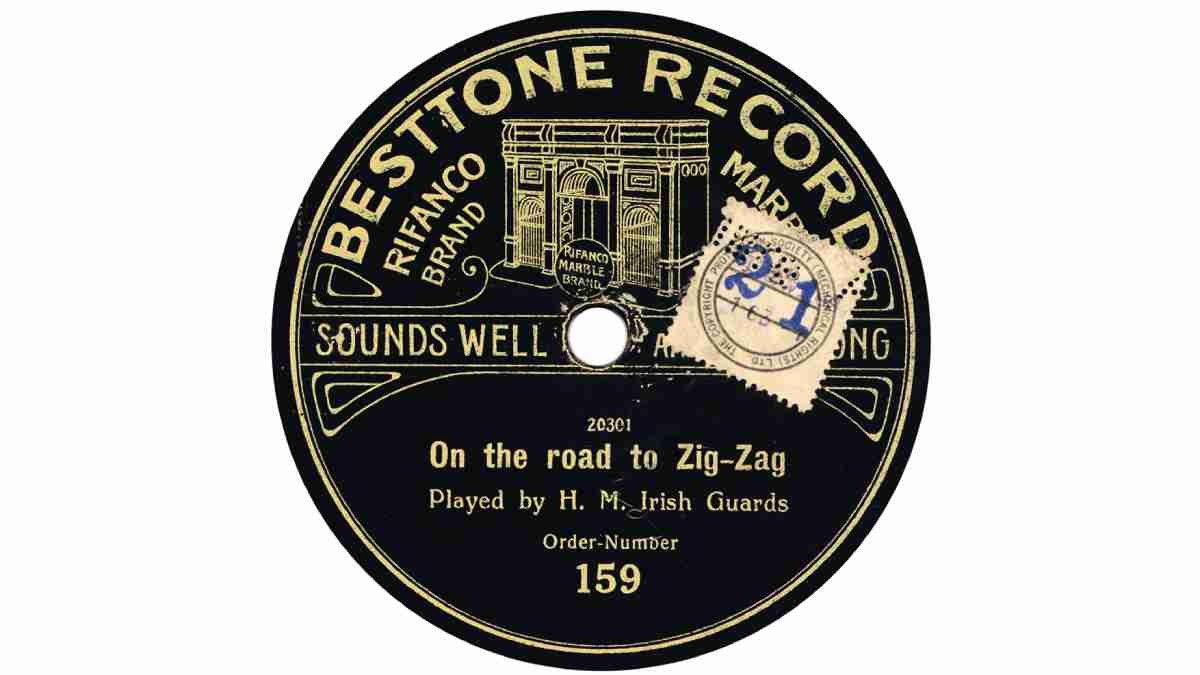
Early British record labels 1898-1926: B
Barberphone | Beacon | Beatall | Beka | Bel Canto | Bell | Bellaphone | Bell Disc | Bellerophone | Beltona, Beltona Bairns | Berliner | Besttone (Rifanco &c)
Barberphone
See Frank Andrews, HD 215, 1997. Some time between 1912 and 1915, Gramophone retailer Walter Barber & Co., 115 Uxbridge Road, Shepherd’s Bush, London W, had records made for them. Two, or possibly three sorts are known. (1) Pressed by Kalliope in Saxony, (e.g. those above), from masters of Blum & Co., who had the Diploma, Pioneer and Victory &c. labels. (2) The Disc Record Co. in Harrow, Middx. might have pressed some Barberphones after the outbreak of the Great War (August 1914); these may or may not have master numbers in the same 1000 series. (3) Barber is also known to have bought up surplus stocks of records and over-stuck his own labels on them. The colour or shape of these labels is not known to us, However, Grammavox and Popular are known to exist over-stuck as Barberphones. All are very scarce.
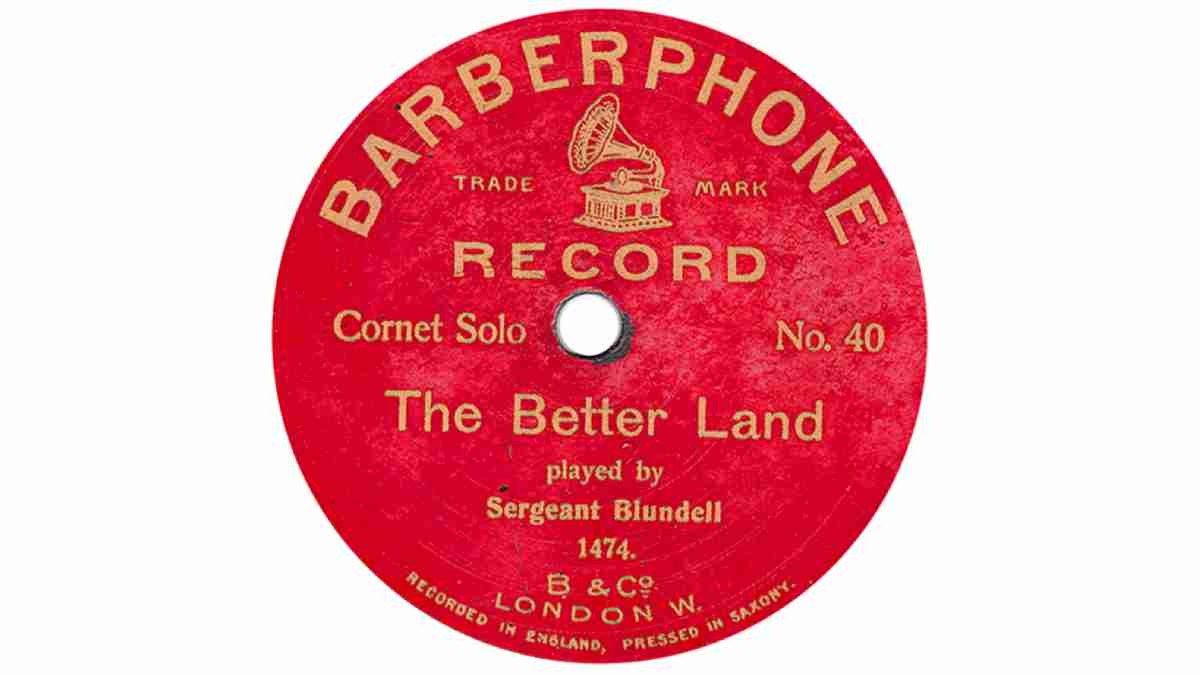
Beacon
See Frank Andrews, HD 215, April 1997, p247. Appearing probably in 1921, Beacon records were made by the Sound Recording Co., who had registered the trade mark in 1913. SRC would usually keep some names ‘in stock’ for future clients. Whether any use was made of ‘Beacon’ before ~1921 is not known; we guess not. They were 5.375″ (13.5cm) diameter, carried masters common to Little POPular and Mimosa, which were other SRC ‘mini-discs’. Later the size of the last two labels was increased to 6″ (15,25cm), but it is not known whether there are also Beacons of this size – it is a scarce label, and the proprietor is unknown. Crystalate pressed them.

Beatall
See Frank Andrews, HD 215, 1997. A rare label. Ray Stephenson believes that the proprietor was a dealer named Lloyd Thomas. They date from about 1913 & 1914. Several sources of masters are known: Bel Canto, Invicta, ILCO and Operaphone – all German concerns. Frank draws our attention to the oddity that the face number on the label is a combination of the catalogue number with the master number embedded in it. E.g. on Beatall 451, we have cat no. 451 and master 3243 and end up with: 4532431. The source of master 3243 is not known to us; but if there was a composite number like 4551996, the 5000 series number embedded in it would almost certainly indicate a Bel Canto master.
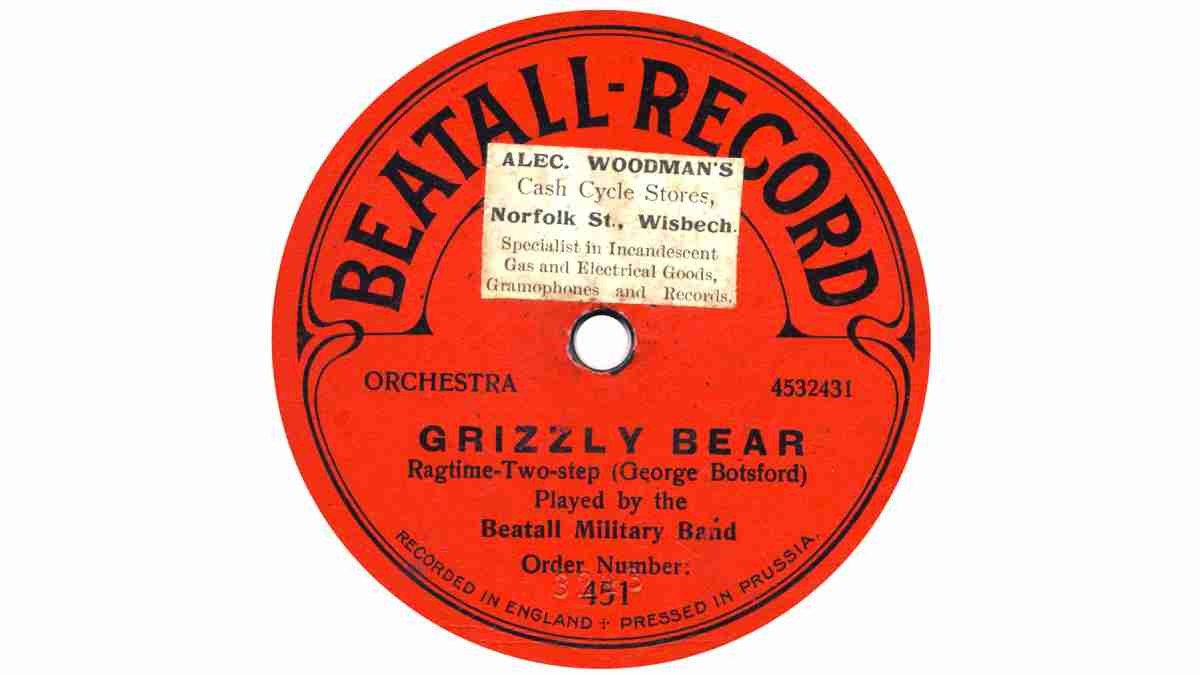
Beka
See Frank Andrews and Bill Dean-Myatt, “Beka – Lindström Records in the United Kingdom”. CLPGS Reference Series No.11, 2011. This is an extremely important publication, being among the first of what we call the ‘New Wave’ in discography. It is compact, inexpensive (at £15), and above all its accompanying CD-ROM carries a searchable database of over 6,000 entries. CLPGS Reference Series No.11, 2011. Get it from the CLPGS bookshop.
The above 22 page A5 booklet contains a full history of the Beka and Lindström companies, and in addition has with it a CD-ROM which carries a 170-page listing of all the thousands of known masters that appeared here, both on Beka itself, and many other labels too. Included are the 35000/36000 masters that continued in use after Lindström had been shut down in 1916 under the ‘Trading With The Enemy’ Act. An invaluable and incredibly information-packed publication on these two very important companies and their products. Beka records were sold in the U.K. from 1905 to 1916; now, thanks to this publication, you can know as much as you want!
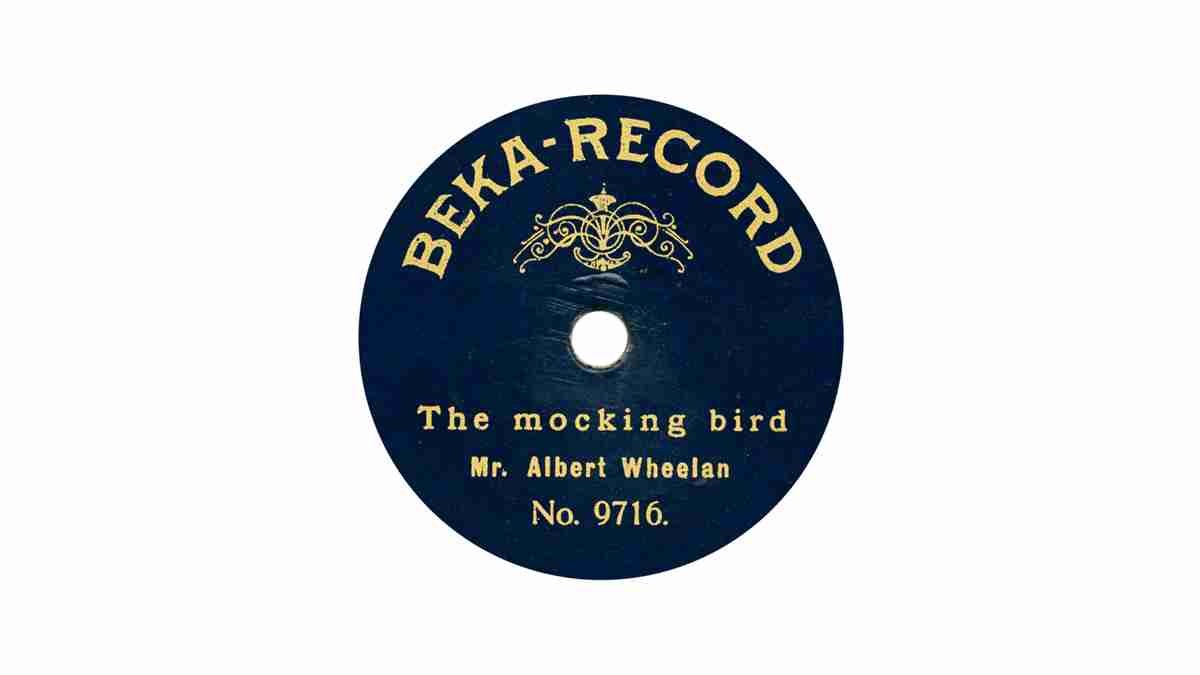
Bel Canto
ind Franks’ reference. The gorgeous design features a male silk-moth, probably a member of the Saturniidae, but my enthusiasm for Lepidoptera is only exceeded by my unfamiliarity with its complex (and indeed frequently-changing) nomenclature; so let just call it ‘a silk-moth’. A very short-lived and seldom found label, c. 1912; probably in existence for just a few months. Who sold them is not known to me. They were of course made in Germany, and while the titling is in English, much German influence remains. For example, on 5078, H.M. Grenadier Guards Regiment is not ours, but His Imperial and Royal Majesty Kaiser Wilhelm II’s Grenadier Guards; and the composer on 5092 is given as ‘Strauß’. Oddly, the first ‘N’ in ‘Made In Germany’ is backwards on the first three examples. A series of masters in a 5000 block appear to have been prepared for it. These were by no means wasted (practically nothing was discarded in those days), but were utilised on very many other labels: e.g. Aga, Beatall, Britannic, Besttone, Burlington, Dacapo, Invicta, John Bull, Jlco,Operaphone, Pickofall, Soundwave, The Stars, Triumph, Turmaphon and doubtless others. Many of these, even, are much more frequently found than the source label. But it must not be imagined that these 5000 ‘Bel Canto’ masters appeared all at the same time on all these labels, still less that those labels were contemporary with each other. These assets changed hands at different times and so were available to different concerns over a period of several years; and that was a very long time indeed in this hectic & difficult period of the British Record Industry.
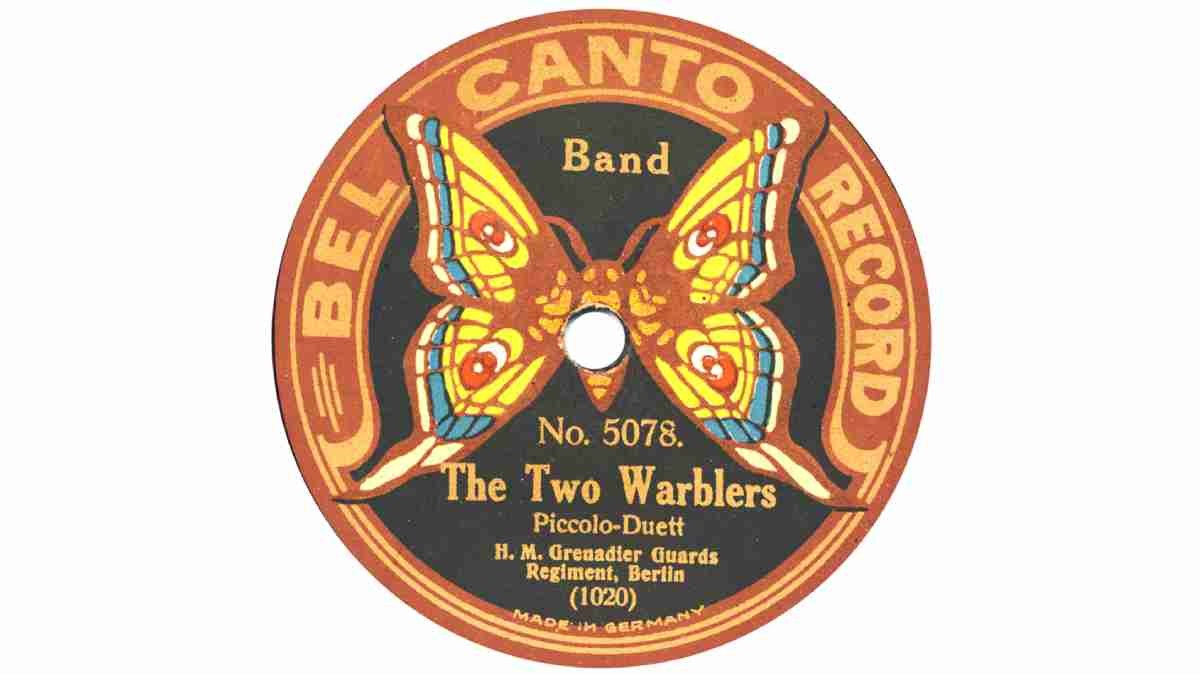
Bell
See Arthur Badrock, TMR 92, 93, 994; 1995-96; also Frank Andrews, HD 143, 1985. The ‘Edison Bell’ concern revived the name Bell (see below for the original Bell Disc) in November 1921. These were just over 5.25″ diameter (13.5cm), but later 6″ (15.25 cm). The initial price was 1/3d (6p). At first they were generally intended for children, but later on standard light repertoire, including dance bands, appeared. The catalogue series ran up to around 700, but the name of the label was changed to Crown from about 600. At that time, the copyright royalty on a record was 5% of the selling price. In the case of Bell, selling at 1/3d, it should have been ¾d. But, the minimum royalty allowed under the 1911 Act was was ½d per side, i.e. 1d in all. This was the equivalent of a 6.7% charge on a Bell. The maker considered this unfair, and quite soon it became commonplace to have a copyright work only on one side, backed with a non-copyright one. There was plenty of such material around, and as a halfpenny royalty on a Bell was only 3.3%, what was sauce for the goose… Edison Bell also used these masters on a variety of other contract labels, such as Little Briton, Savana, Fairy, Dinky, and Marspen. The Bell back catalogue was ‘mined’ for suitable material – often for non-copyright stuff; e.g. Little Briton 371 (a client label of 1924) has ‘Shine’, the popular tune by Ford Dabney with a copyright stamp, backed with the old 1873 song ‘Silver Threads Among The Gold’, without a stamp. Bell records are found occasionally; but some of its clients are quite scarce.
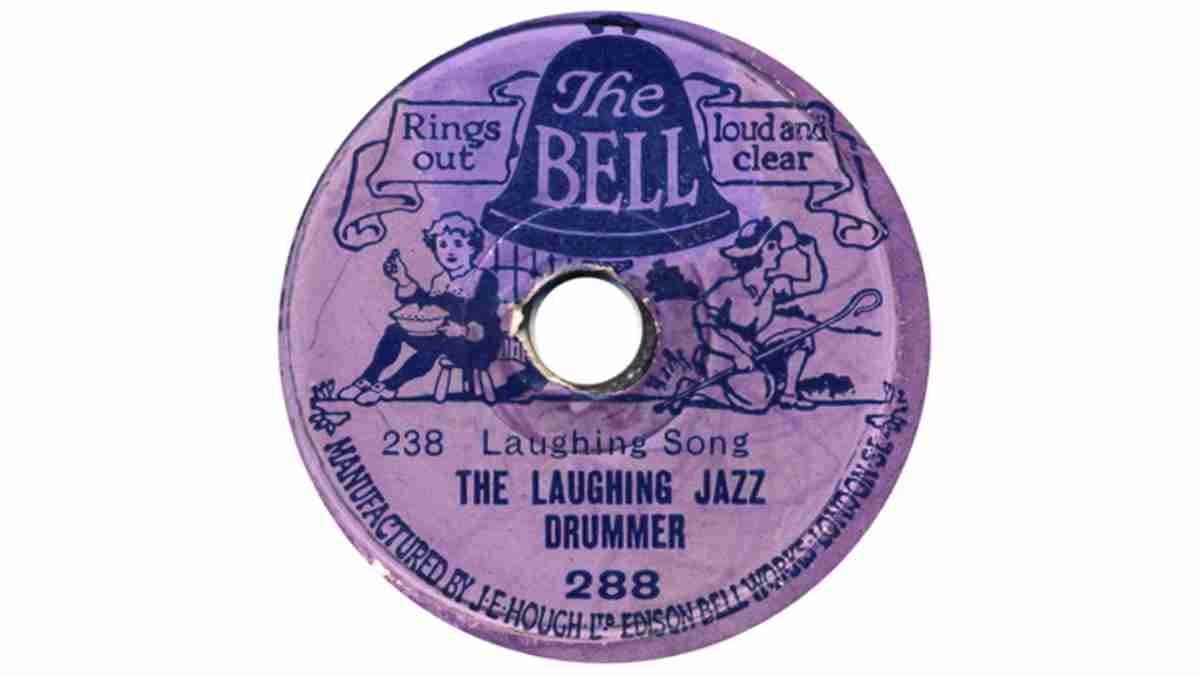
Bellaphone
See Frank Andrews, HD 215, 1997. In his indefatigable researches over a period of over 40 years, Frank Andrews has always recorded marques that may not have actually ever appeared – this excellent procedure is just to be on the safe side. In the case of Bellaphone, he found slender evidence that they might have existed. There certainly was a Bellaphone Co. Ltd.; it was located at 10 Brook Green, Hammersmith, London W6. In March 1920 it was reported that the company was advertising its records at the British Industries Fair nearby at the White City. Whether this was done; or whether any Bellaphone discs were ever made; and if so, ever appeared anywhere; or if any were actually sold; all this is quite unknown. So if you have one, or find one, do please let us know!
Bell Disc
The C.L.P.G.S. Reference Series booklet No.41 carries a detailed written history of Edison Bell, by Frank Andrews and Bill Dean-Myatt. It contains a CD-ROM having nearly 17,000 Edison Bell masters (Bell Disc, Electron, Radio &c as well as Winner) listed in a MS Excel file, fully searchable & sortable. See more info & other such ‘new wave’ label listings.
Frank Andrews’ original research appeared in HD 141, 142, 143, 145; 1984-1985. Also FA, BRI. The company often loosely called ‘Edison Bell’ had a long, often distinguished life – but which also had its ups and downs; and the concern that made them had several different names, even in our time period of 1898-1926. ‘Bell-Discs’ first appeared in May 1908. They were 10.25″ (~26 cm) diameter, started their catalogue numbers at 1, and had attained just over 500 issues by December 1912, when the company terminated the label, its new 10″ ‘Winner’ disc having become even more successful. Bell-Disc masters were used to make ‘stencil’ records for quite a number of clients, some of them now very scarce. They are usually well-recorded, and the quality of the pressings, variable at first, soon became very good. Bell-Discs are not uncommon. You also see both sides of a paper packet for the records. ‘Discaphone’ was the name given to the machines produced by the company, because the word ‘Gramophone’ was then the copyright of The Gramophone Company. The second side advertises an early home-recording device. This originated with the Neophone Co., and when they were wound up, ‘Edison Bell’ purchased a large stock of them and sold them under the name ‘Eureka’. It recorded on wax discs, and is extremely scarce today. Note that the last two labels illustrated do actually use the word ‘Gramophone Record’ – The Gramophone Company was very peeved in 1910 when a court ruled that the word ‘Gramophone’ had become generic, and so anybody could use it; naturally, ‘Edison Bell’ (which had existed long before the Gramophone Co. set up here in 1898) made speed to do so!
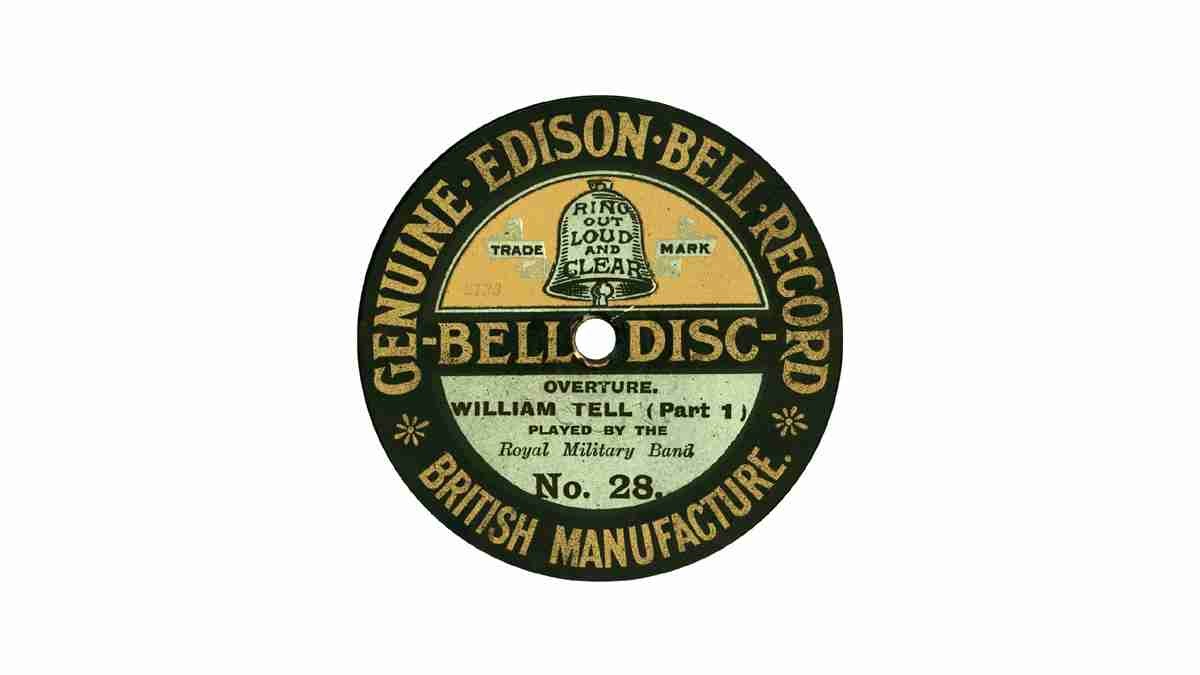
Bellerophone
See Frank Andrews, HD 215, 1997. Here is another of Frank’s remarkable quests. Blum & Co. had many labels. In December 1912 they acquired yet another trade mark: Bellerophone. Apparently no examples are known, but Frank infers their existence from legal records in the Court of Appeal, when Blum accusedKalliope Muskwerke of Saxony of offering to press up discs for the U.K. market using his own masters which were kept at the Kalliope factory, and were for his exclusive use. One of the labels mentioned by Blum was Bellerophone. Again, if you have one, please let us know – you will of course receive full credit.
Beltona, Beltona Bairns
A complete history and listing of Beltona Records 1921 – 1960 exists: ‘Beltona – A Label Listing and History’ by William Dean-Myatt, M. Phil. It was originally a 307-page book in A4 format. This has sold out, but the author has prepared a revised version incorporating much extra information, including recording dates. It is in the CLPGS Reference Series, No. RS-37. These are A5 format. The listing itself is in the form of a DVD-ROM which you view on your PC or laptop. This has the great advantage of being searchable, and you can of course sort the data in various different ways.‘Shop’ and then ‘Reference Series’.
Only the first few years of this long-lived label are relevant to our project. The first Beltonas – those with the pale blue label – appeared transiently about 1921. Only four are known, and William Dean-Myatt, M. Phil. believes they may have been intended for export only, possibly to Australia. They were never mentioned in the British trade press. Two of these proto-Beltonas were derived from the ‘Popular’ label which belonged to the Sound Recording Company, and were pressed by Crystalate. A third has masters that are only known from Guardsman. As Guardsman was also pressed by Crystalate at this time, there may be a connection there. The ‘main’ Beltona record was made for Murdochs, a wholesale firm tending to specialise in musical items. They were pressed by what collectors loosely call the ‘Vocalion’ company at Hayes, Middlesex. The first lovely red label was soon replaced by the equally nice blue-green one. Issues began in late 1923 with a large release. Similarly-labelled 12″ discs in an 8000 series were issued, but some of them carried Guardsman masters dating back to around 1917 – one such is illustrated in its original packet. Because Murdochs had strong Scottish connections, they soon issued Scottish material. In the long run, this was very successful, and Beltona evolved into a company that specialised in that repertoire to the virtual exclusion of all others. A more expensive ‘De Luxe’ series also appeared. As remarked, its long & fascinating history is related in the above book.
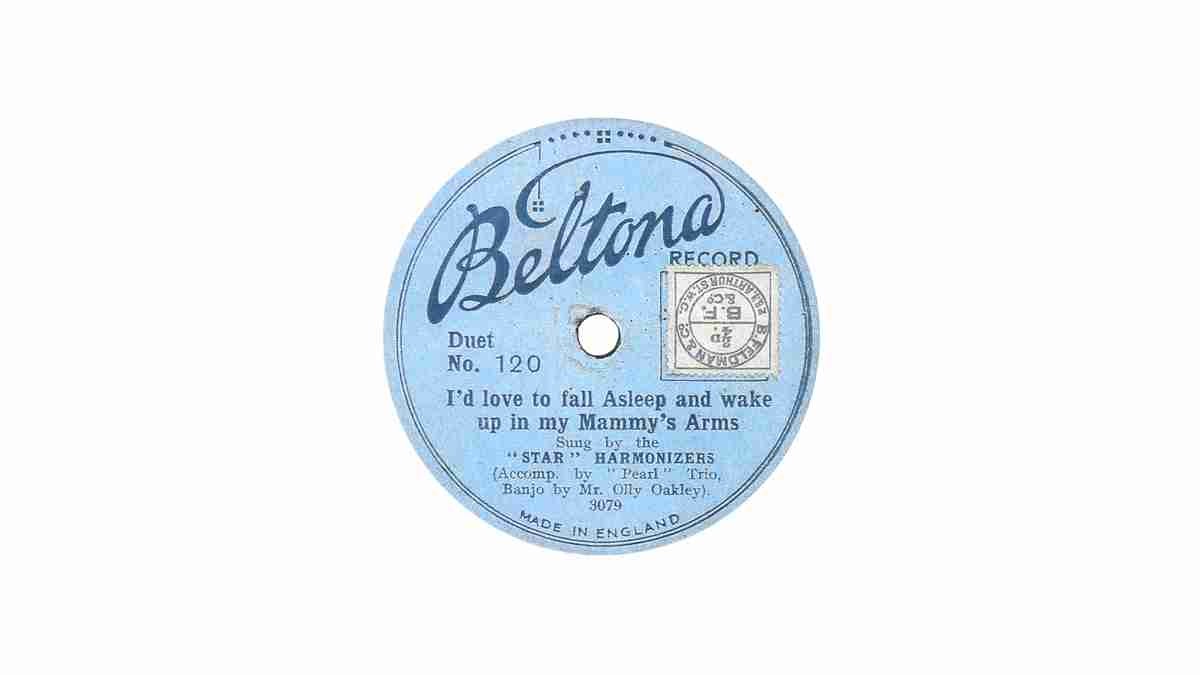
Berliner
See writings by Peter Adamson, the acknowledged expert on British Berliners. E.g. TMR 65-66, 1983, where he comments on a closely-printed 32-page list appearing in TMR 63-64, 1982, contributed by the late Brian Rust. Also TMR 24, 1973, in which Peter writes about Berliner ‘labels’ and reproduces 20 varieties & types of them very well indeed. In these pages, we are very liberal in our definition of ‘a record label’. Strictly speaking, ‘Emile Berliner’s Gramophone’ discs – always known as ‘Berliners’ – should not be allocated the status of ‘a separate label’. They were merely the first product of The Gramophone Company, and appeared late in 1898. They were followed in 1902 by ‘Gramophone & Typewriter’ records, and again in 1912 by ‘His Master’s Voice’. Yet were you, as someone who so far knew little about old records, to find a Berliner, a G&T and an HMV all at the same car boot sale (and I fervently hope you will do so!), there is very little, superficially, to identify them as products of the same company. Hence this entry. Ironically, Berliners don’t even have labels: the necessary information is etched and/or hand-written with a stylo in the middle of the disc. They are 7″ diameter and single sided, except for a few very late issues which are 10″ diameter, still single sided, and very, very rare indeed. We are most indebted to Bob Lilley, who contributed this image of a 10″ disc. Even 7″ Berliners are eagerly sought after and poor, worn & even cracked copies will not be had at under £20 – £40 these days. They are, one might say, the incunabula of disc records. At an auction a few months ago, one fetched £500; but that was by the noted Music Hall artiste Gus Elen. It wasn’t in very good condition though. All the history of The Gramophone Company is widely available on line, so nothing else need be recorded here.
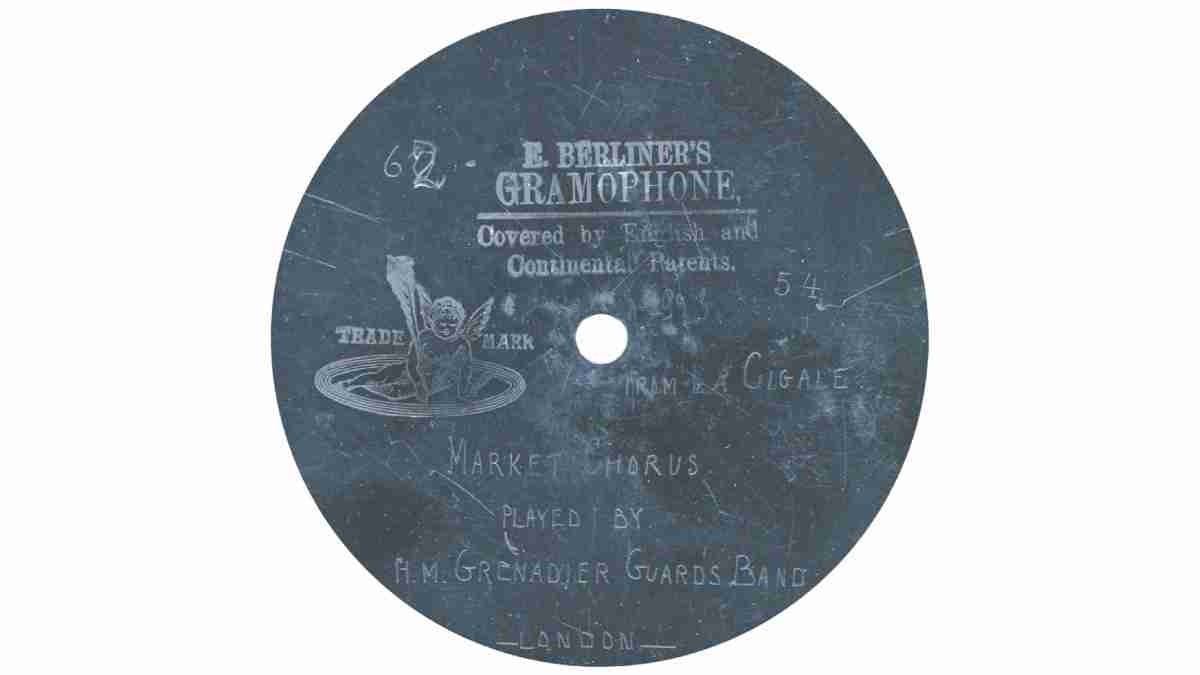
Besttone (Rifanco &c)
See Frank Andrews, HD 217, 1997. Besttone is one of several labels of which Leon Liebowich was the proprietor. See Pickofall below for details, and alsoPlaywell – Regent. It is thought that no original material appeared on any of these 3 labels – they were all derived from pre-existing masters. For example, the first two above are both related to Invicta. 20140 is on (German-made) Invicta 183, and 20157 is on (German-made) Invicta 222. They would date from about 1912-1914. What ‘Rifanco Brand’ or ‘Marble Brand’ mean is unknown to us. However, it is notable that the Canary, Eagle and Lion brand labels appear related to the catalogue numbers, almost as if every so often, Liebowich changed the ‘theme’ of his label. The last two examples merely have a curved sticker on top of a Diploma record, and a Famous record; both of these marques belonged Blum & Co. Ltd. Blum folded in 1915; perhaps Liebowich bought some or all of his remaining stock? An elusive set of labels.
